3-Minute Guide: ChatGPT's Code Interpreter is Here! - 2024
Hot off the press! As of July 6, 2023, OpenAI declared it would roll out its official Code Interpreter plug-in to all ChatGPT Plus users. This announcement was made available through the Beta panel in the settings and was met with a wave of excitement across the user community. And the good news didn't stop there. As of today, July 10, the Code Interpreter is officially live!
In an ambitious move, OpenAI released many plugins, all of which are impressive. So, what exactly is this Code Interpreter, and what does it bring to the table? In the subsequent sections, let's unravel these questions, providing an in-depth look at this innovative feature set to redefine the coding landscape.
What is the ChatGPT Code Interpreter?
The Code Interpreter is a standout of ChatGPT's official plugins, designed to enhance tasks such as data analysis, image conversion, and code editing. It is exclusively available for ChatGPT Plus, subscribers and remains in the beta stage of software development, indicating that OpenAI is persistently refining it.
Before its general release to Plus subscribers, it was in a closed beta stage, accessible only to those few, while others needed to join the waiting list. Participants in this beta phase have commended its proficiency in data analysis, chart creation, file editing, and mathematical operations. Such positive feedback indicates the ChatGPT Code Interpreter's potential to significantly streamline and enhance programmers' workflow.
When this feature was first unveiled in its Alpha development stage, OpenAI described it as:
“An experimental ChatGPT model that can use Python, handle uploads and downloads.
We provide our models with a working Python interpreter in a sandboxed, firewalled execution environment and some ephemeral disk space.
Code run by our interpreter plugin is evaluated in a persistent session that is alive for the duration of a chat conversation (with an upper-bound timeout) and subsequent calls can build on top of each other.
We support uploading files to the current conversation workspace and downloading the results of your work.”
The excitement surrounding the Code Interpreter is quite understandable. Its introduction means that users can blend the extensive language model capabilities of tools like GPT with traditional programming. This significantly reduces the need for manually writing programming code or setting up specific environments to run such code. That's a game-changer in anyone's book!
Capabilities: What Can the Code Interpreter Do?
Act as an Instant Data Scientist
The Code Interpreter morphs ChatGPT into an always-available data scientist. This powerful tool allows ChatGPT to run code, create charts, analyze data, perform mathematical operations, and edit files, among other tasks.
With the capability to manage any file or data, the Code Interpreter enables ChatGPT to sort and visualize data efficiently, given simple instructions. Its versatility extends beyond mere data sorting and visualization - it can assist in tasks like chart creation, data analysis, and even video editing. The plugin is adept at transforming raw data into engaging, easily understandable visual formats without requiring additional instructions from the user. This feature amplifies its effectiveness and user-friendliness.
For instance, the plugin can ingest raw, unstructured data from PDFs and promptly convert it into a structured format, ready for analysis.
The Code Interpreter stands out not just for its data handling abilities but also for its prowess in deriving meaningful outcomes. It can swiftly reorganize data, run models, and pinpoint the most likely results, paralleling the expertise of a professional data scientist. This provides instant, on-demand access to high-quality data analysis and visualization.
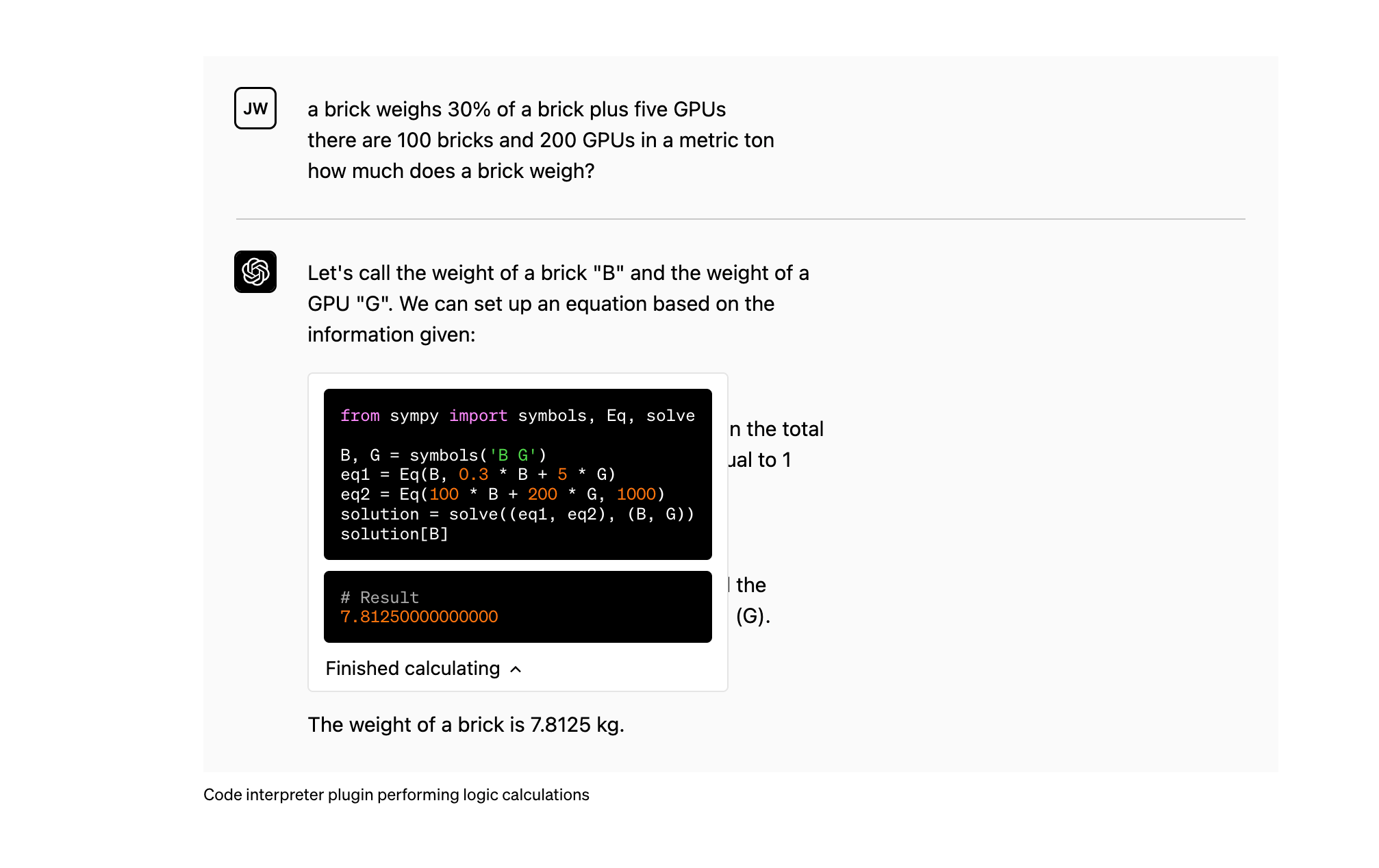
Generate Code
Another standout feature is the ability to generate code based on natural language input by the user, then execute the code using Python and display the results directly in the chat box.
Users can upload large datasets, ask ChatGPT to interpret them, identify trends, plot and compare variables, and quickly get comprehensive analyses. This optimizes the coder's workflow and makes coding more understandable and intuitive for a wider audience. With Code Interpreter, ChatGPT will make the coding environment more creative and efficient.
Example:
Ethan Mollick asked ChatGPT to create a GIF map of every lighthouse in the United States flashing against a dark background. To finish this task, he sent a CSV file to ChatGPT containing the location of every lighthouse in the United States. Moments later, ChatGPT provides an accurate map with blinking lighthouses.
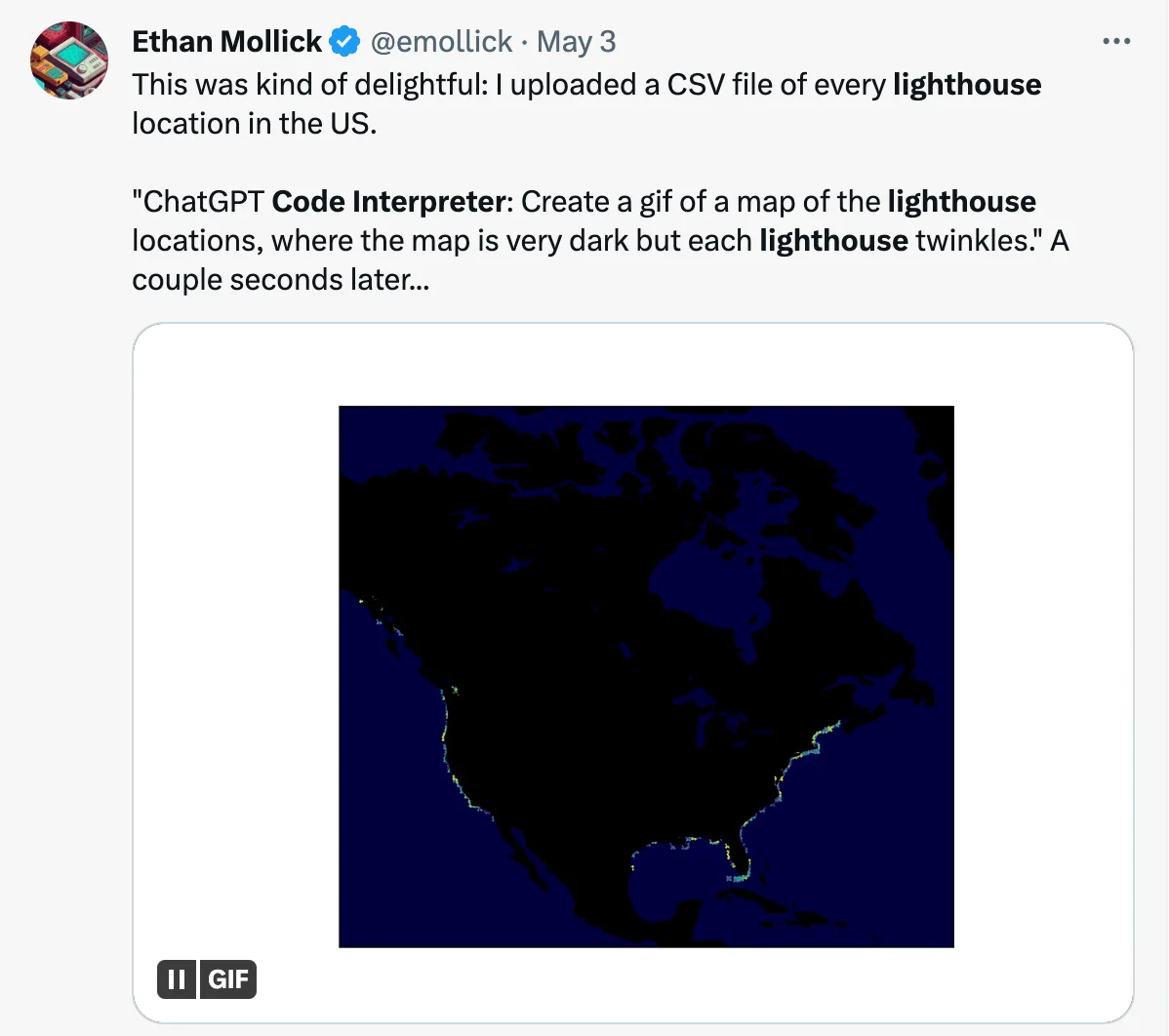
Mastering File Handling and Conversion
This plugin embodies excellent file-handling capabilities. You can use it to handle any data type, including uploading and downloading files. Some successful operations that have been found are:
Extract colors from images to make custom palettes.
It automatically compresses large images to optimize memory storage.
300 hours of Spotify playlists for analysis and visualization.
Convert GIF to MP4 file.
This powerful plugin can also convert files from one format to another and execute clean Python code in a safe "sandbox, firewalled execution environment, and some temporary disk space." This also demonstrates the extensive capabilities of the code interpreter - you can have data processing and Python execution capabilities on a unified platform without switching.
How to Enable the ChatGPT Code Interpreter
Steps to Enable It
If you're eager to harness the power of this advanced tool, here's a quick guide to getting it up and running:
Log in to ChatGPT: Log into your ChatGPT account. You can quickly sign up on the website if you don't have one.

Navigate to Settings: Head to the settings section once logged in. You'll find this at the down-left corner of your account page.
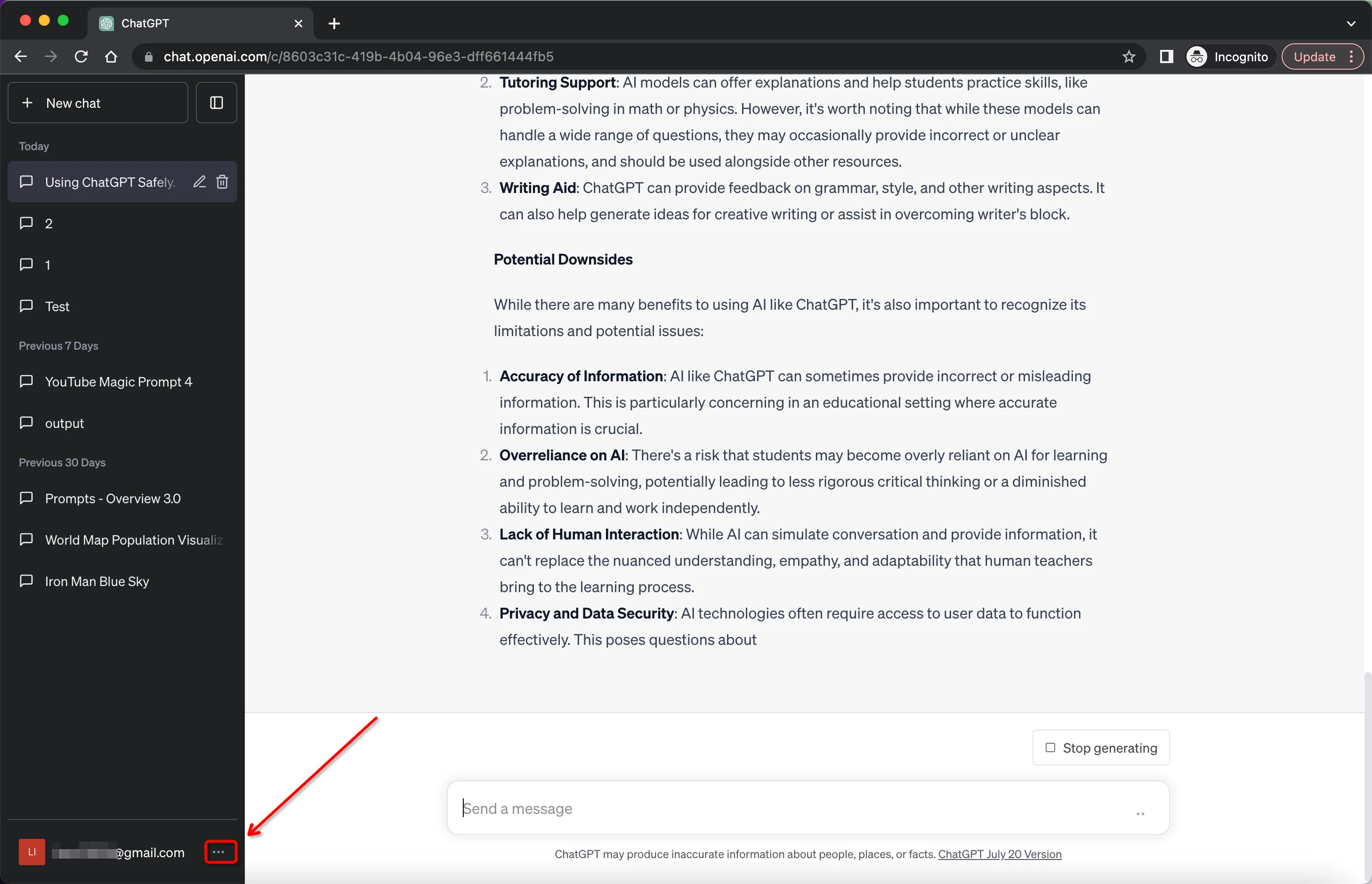
Access Beta Features: Within the settings menu, look for an option named 'Beta Features'. Click on it to see a list of all the available beta features.
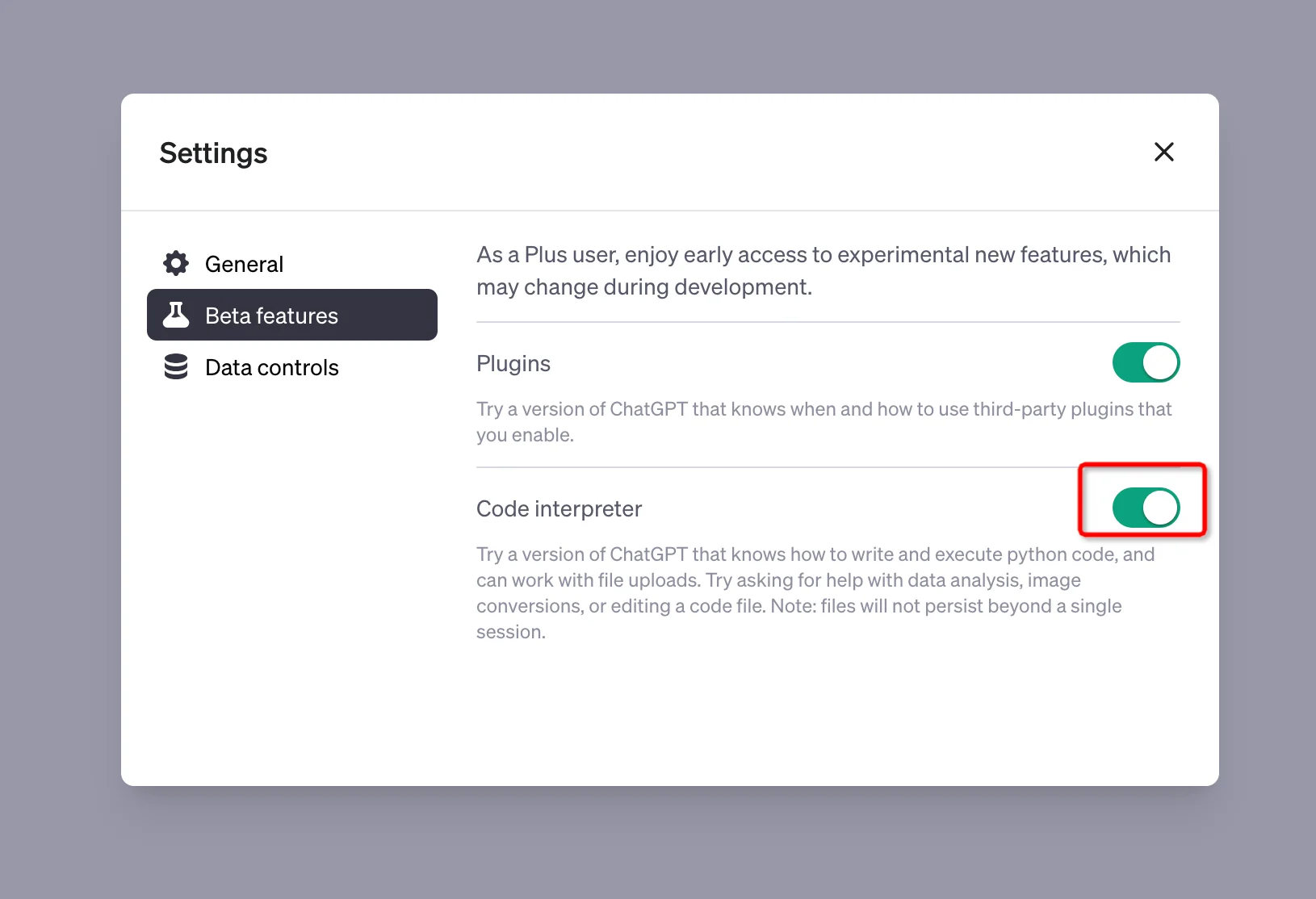
Activate: Locate 'Code Interpreter' in the list of beta features. Remember, this feature will be only accessible to all GPT Plus users. Once you find it, go ahead and turn it on.
Open a New Conversation: Now, return to your main page and start a new conversation.
Select 'Code Interpreter' in the dropdown menu for your new conversation.
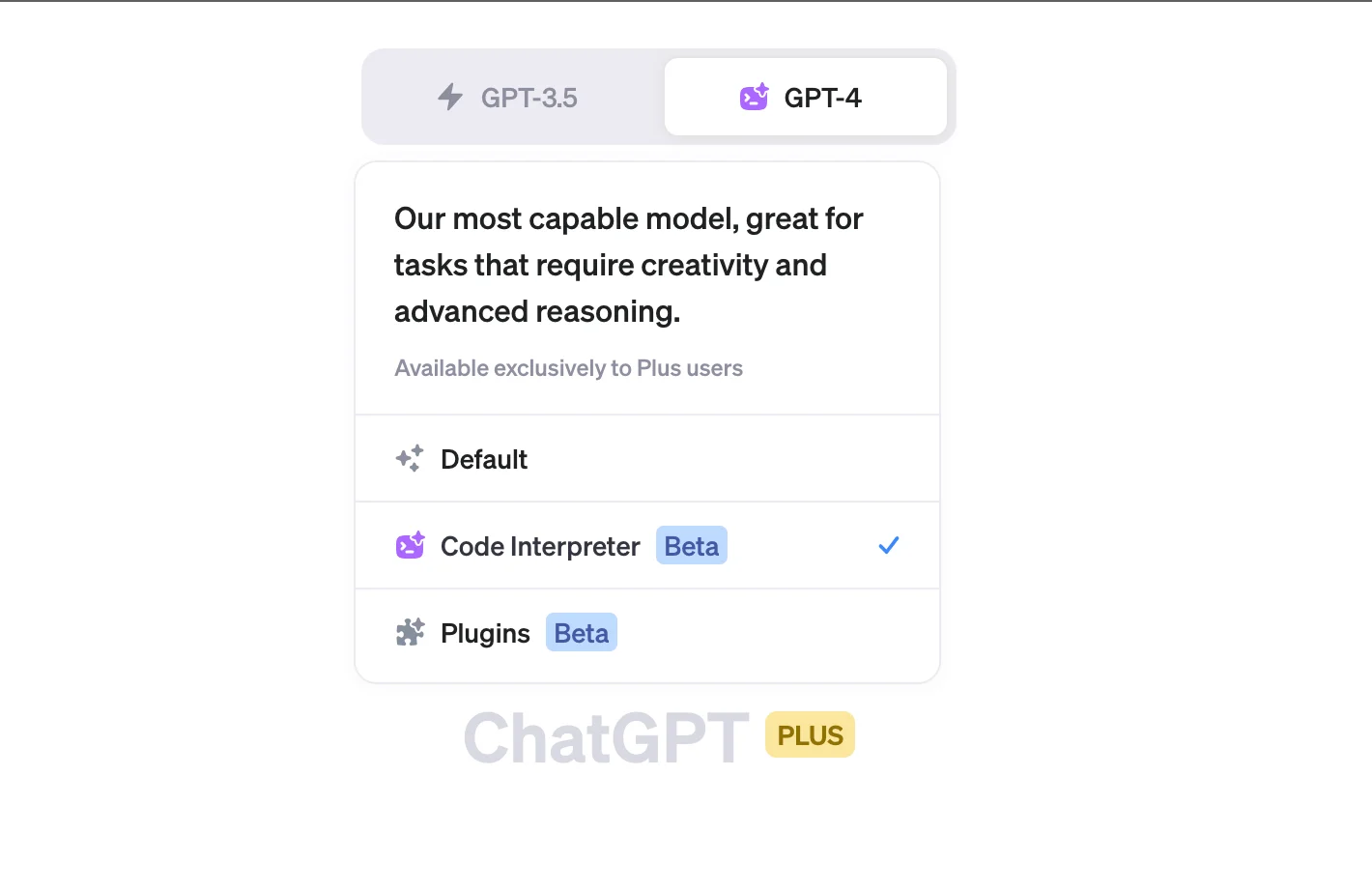
Now, you can enter your prompt and associated files. Click the "+" button or drag your file to upload, then send it with the prompts.

Example of Using the Code Interpreter:
Towards Data Science uses the Code Interpreter to successfully generate a map for visualization, marking countries with dots. The size of each dot is proportional to the country's population. Let's replicate this process and explore the capabilities of the Code Interpreter.
Datasets we need:
country populations
locations in terms of latitude and longitude.
Step 1 Send Prompt:
Write Python code to create a visualization with a world map and label countries with dots whose size is proportional to that country's population. Population data is given in the "Country Population History CSV" file.
Use the most recent data on the country's population.
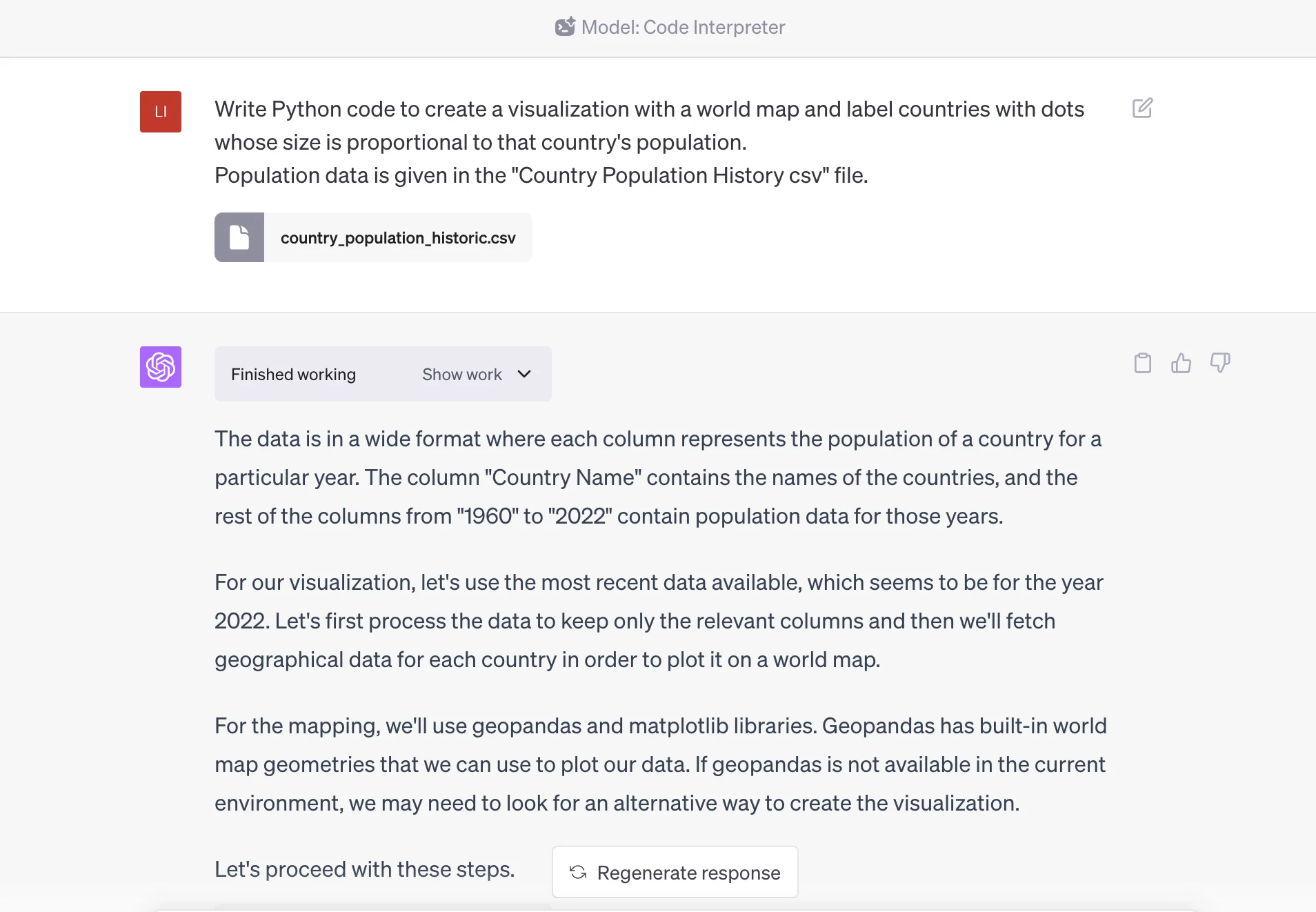
Step 2 After that, ChatGPT will read the data. It takes about 1 minute.
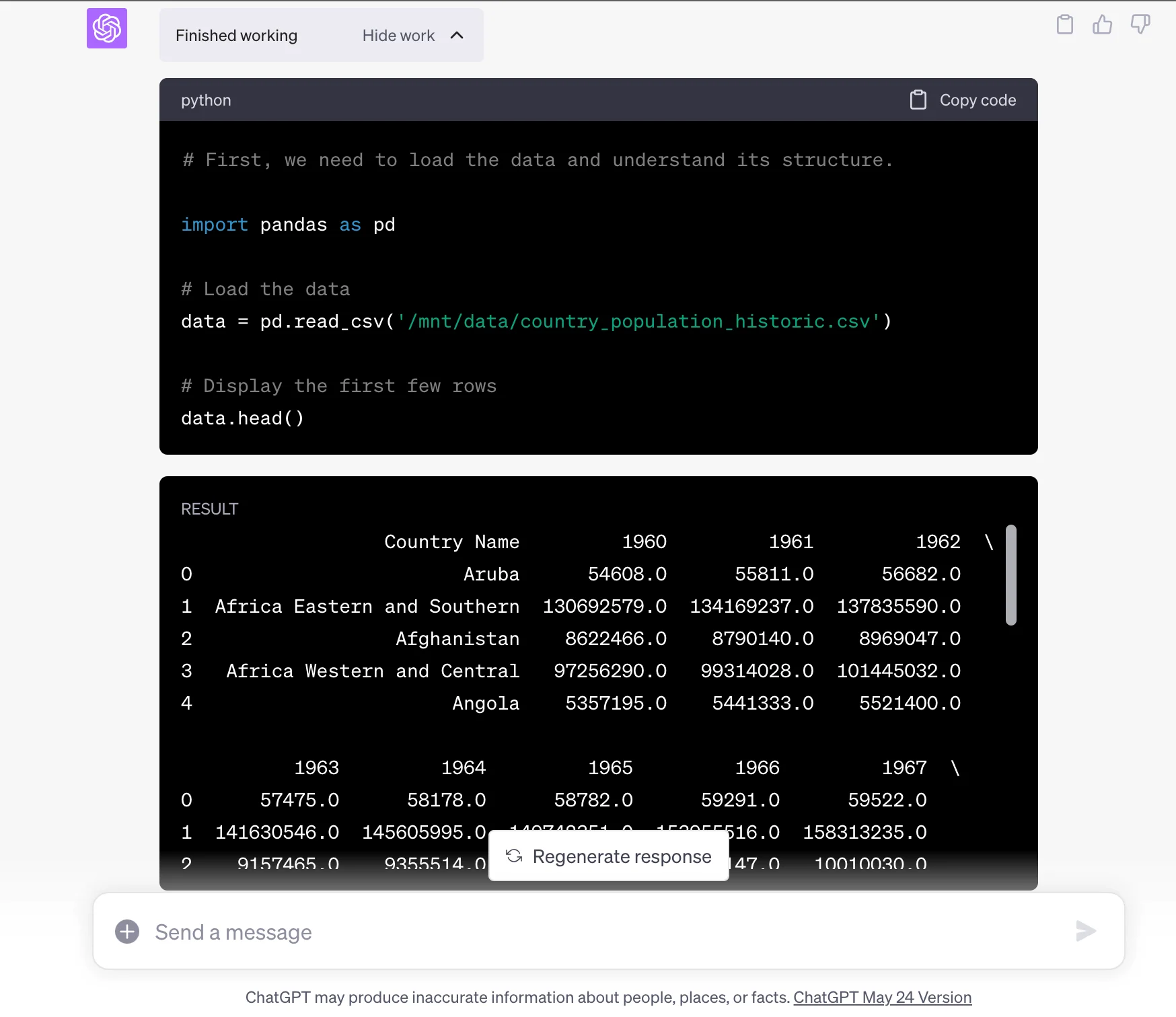
Step 3 ChatGPT then generated a map using the points and asked me for other files. But this is not perfect.
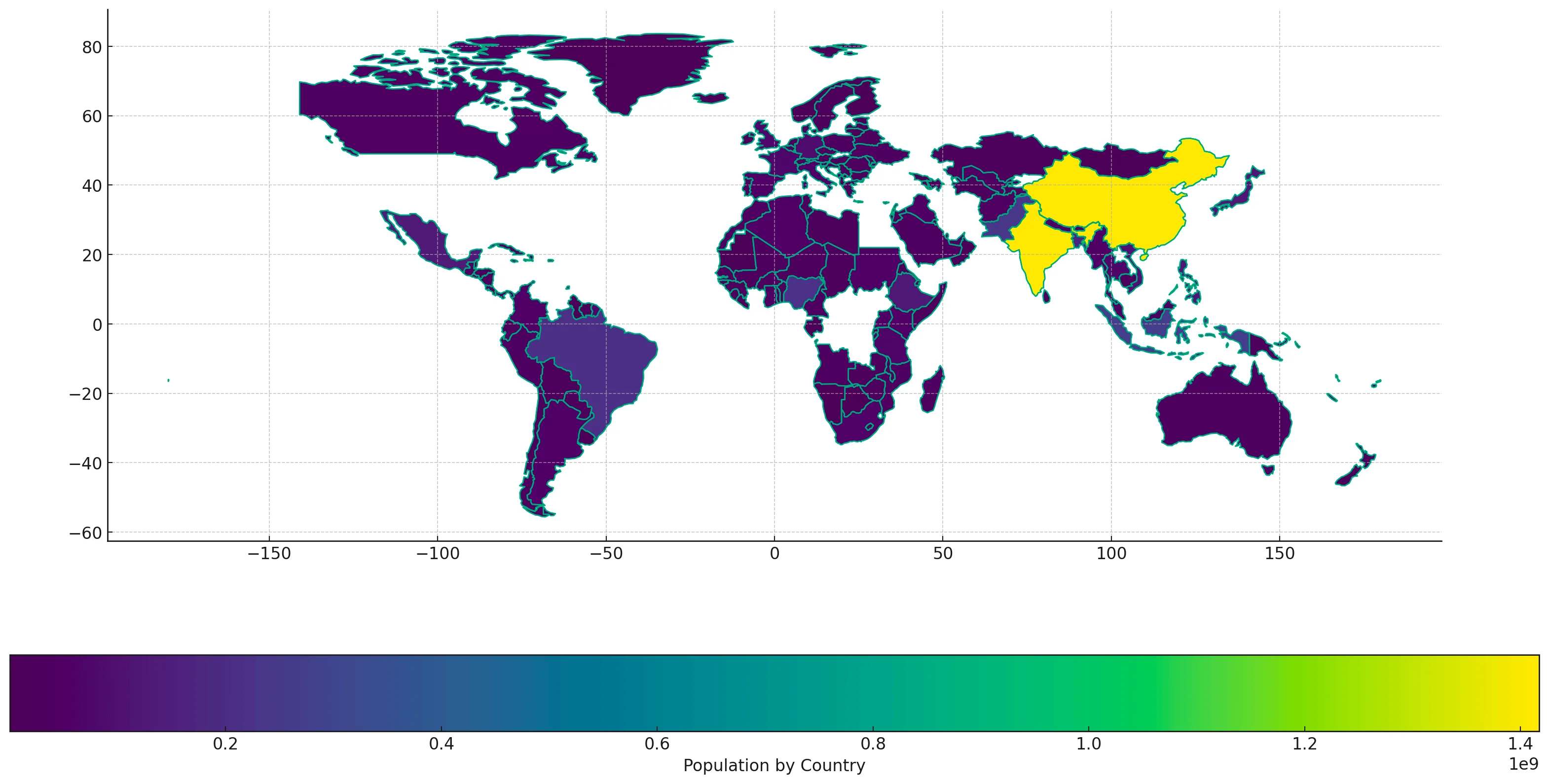
Step 4 Therefore, I sent it the "country_coordinates.csv" file to further optimize its generation. It is worth mentioning that it can now check and fix its own code errors by itself.
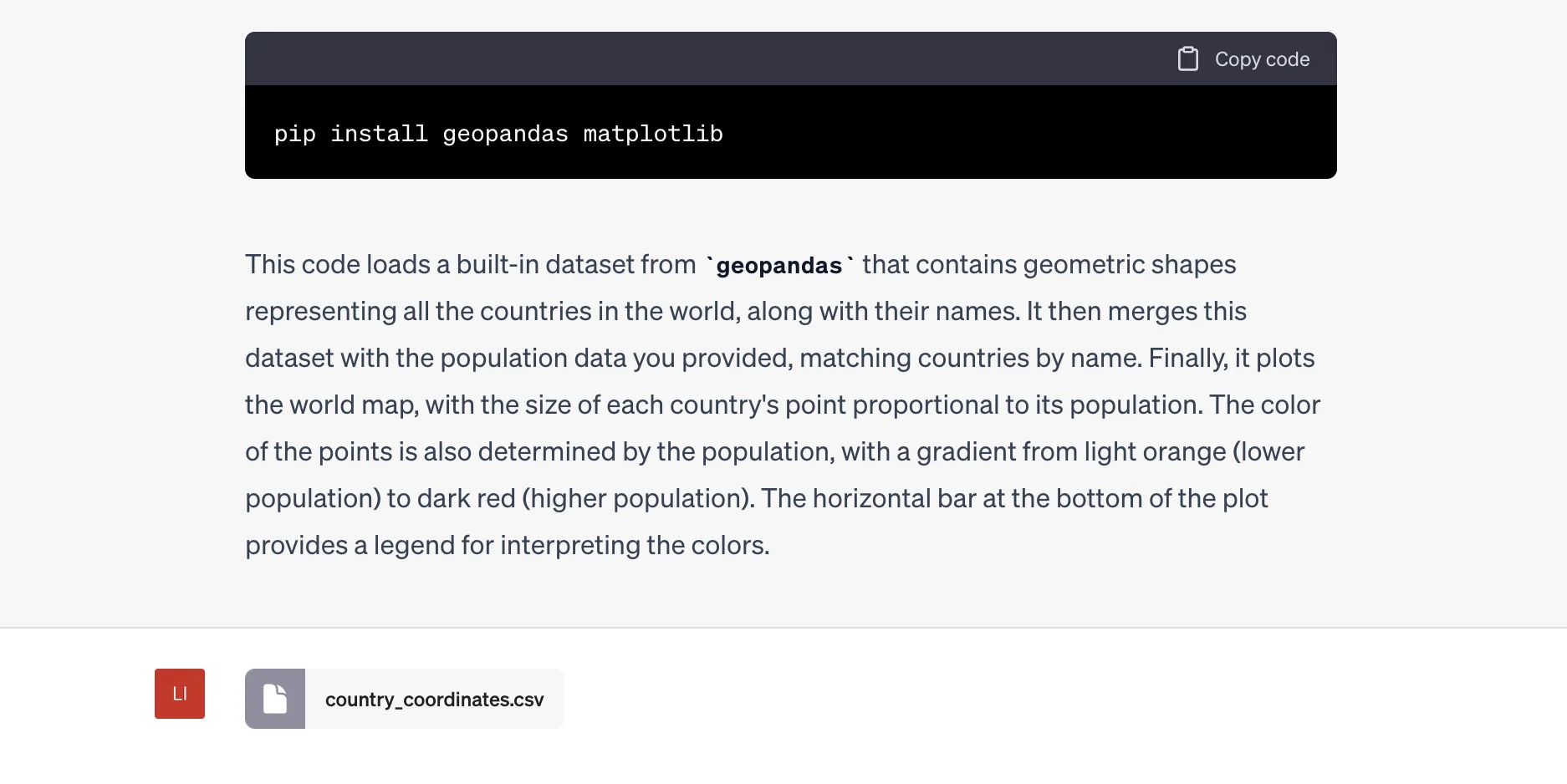
Step 5 This is the result of the last generation. This interactive visualization allows us to zoom, pan, and hover over points to see more details. Although it still has some bugs when running it, so we need to adjust it before using it. But there is no doubt that this has demonstrated the programming capabilities of the code interpreter.
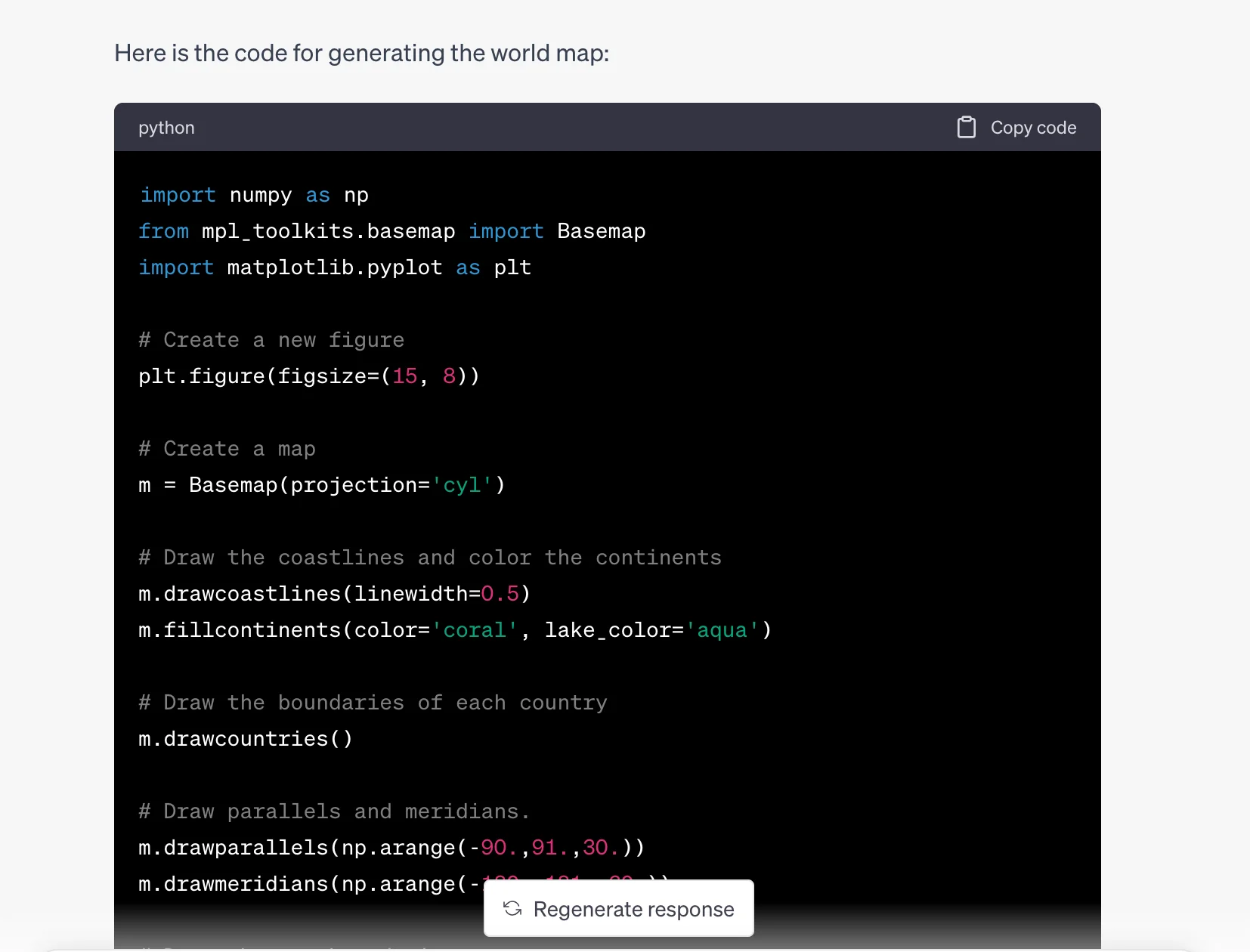
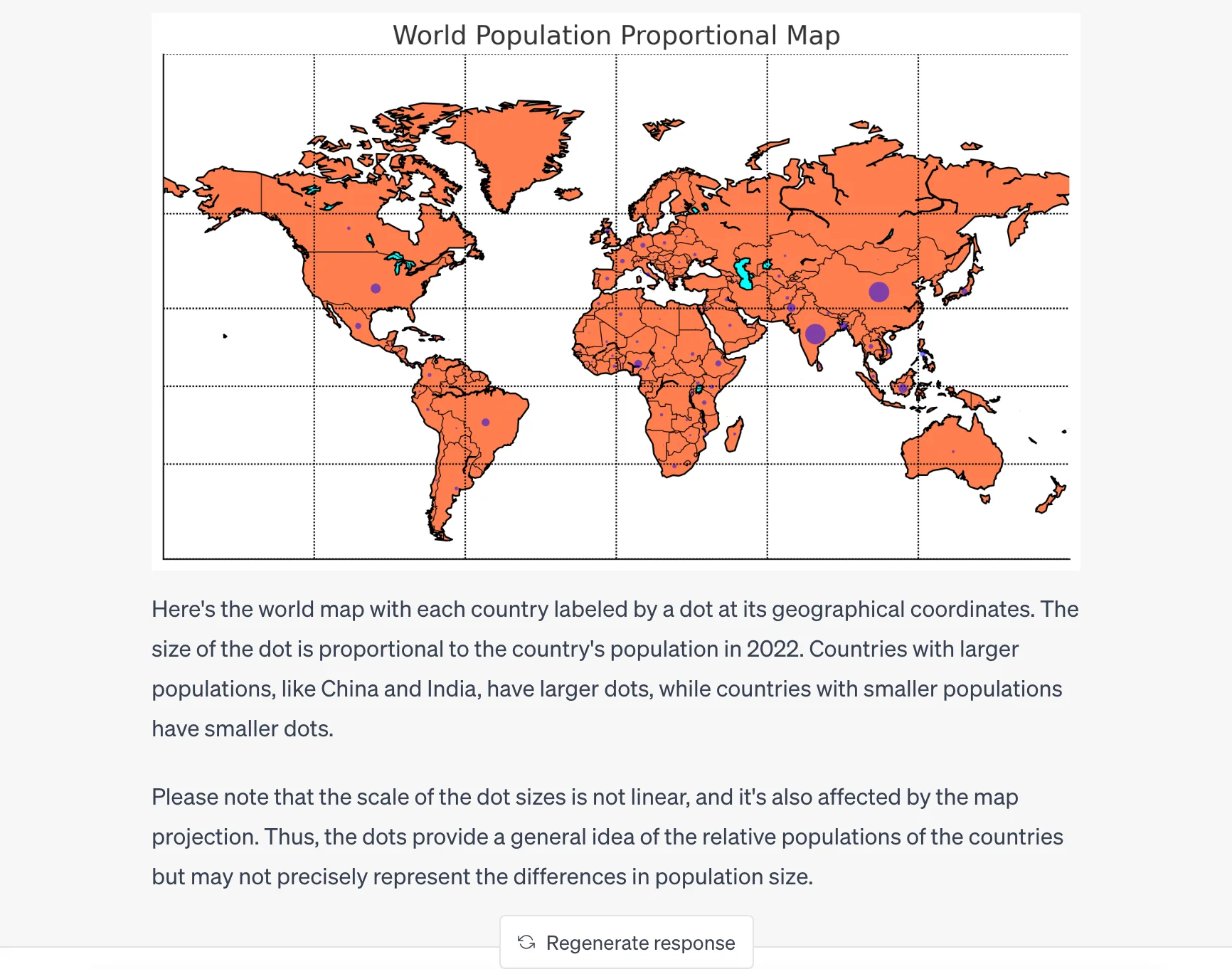
NOTE:
This code interpreter (beta) chat file is only valid for a single conversation. If you log out, you can continue the conversation, but the previous files, links, and code blocks below may not work as expected.

Sometimes, it will show that there is not enough memory to process the file.
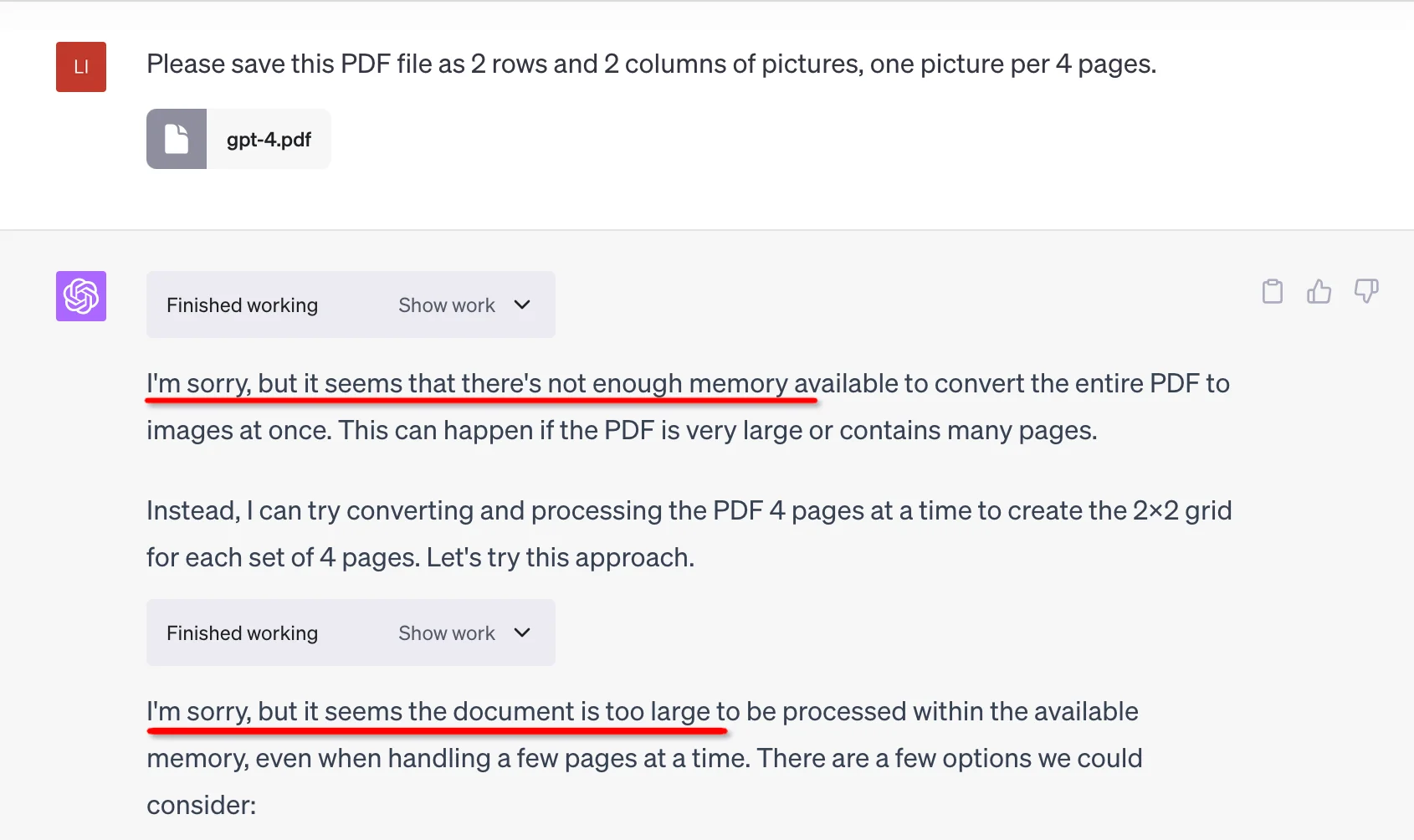
Cases Sharing: Successful Application Cases of Code Interpreter
So far, many people have successfully used this feature to produce their desired content. Some examples below:
Case 1: Generate Customized Maps
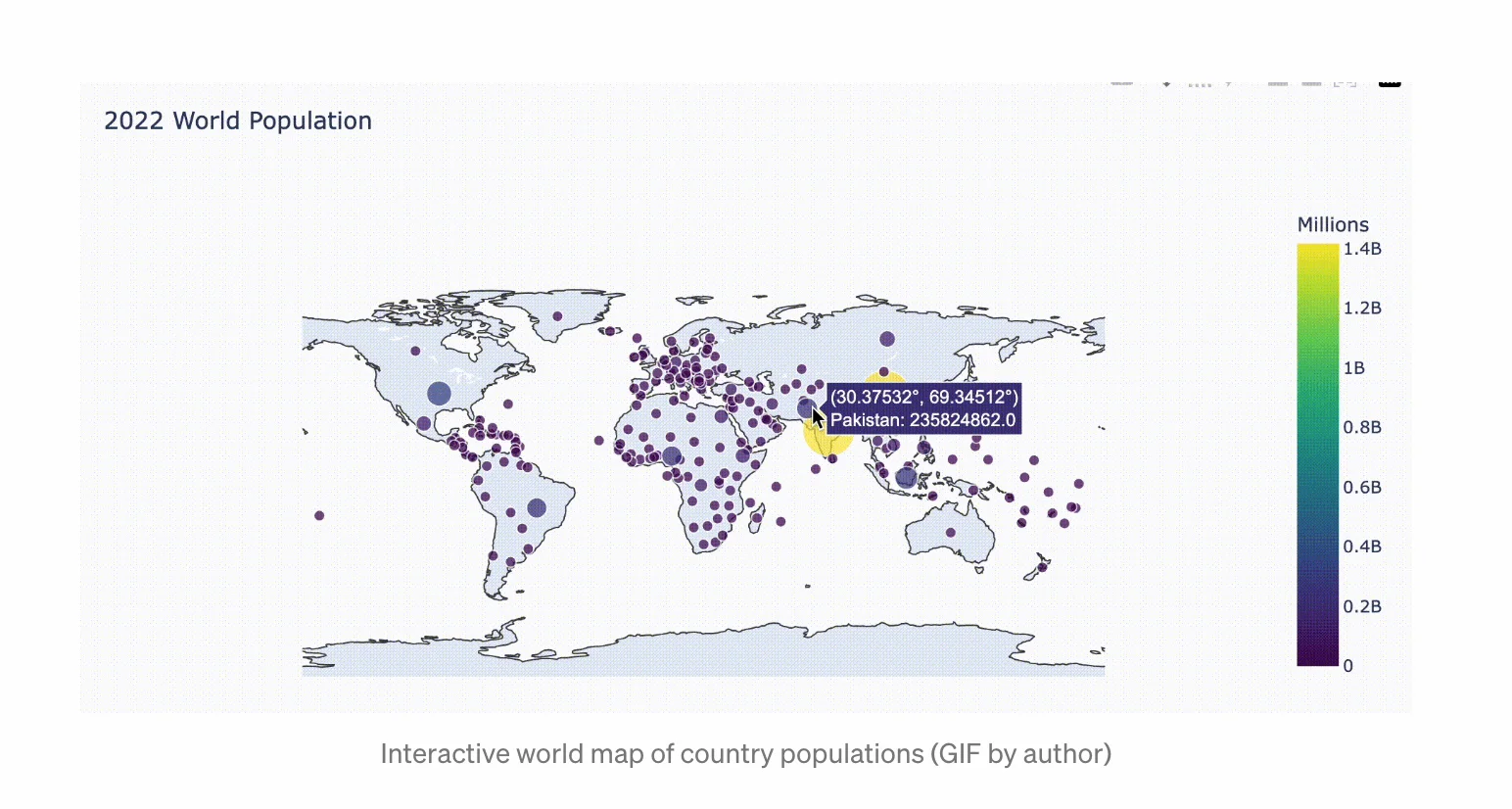
Case 2: For SEO (Data Analysis)
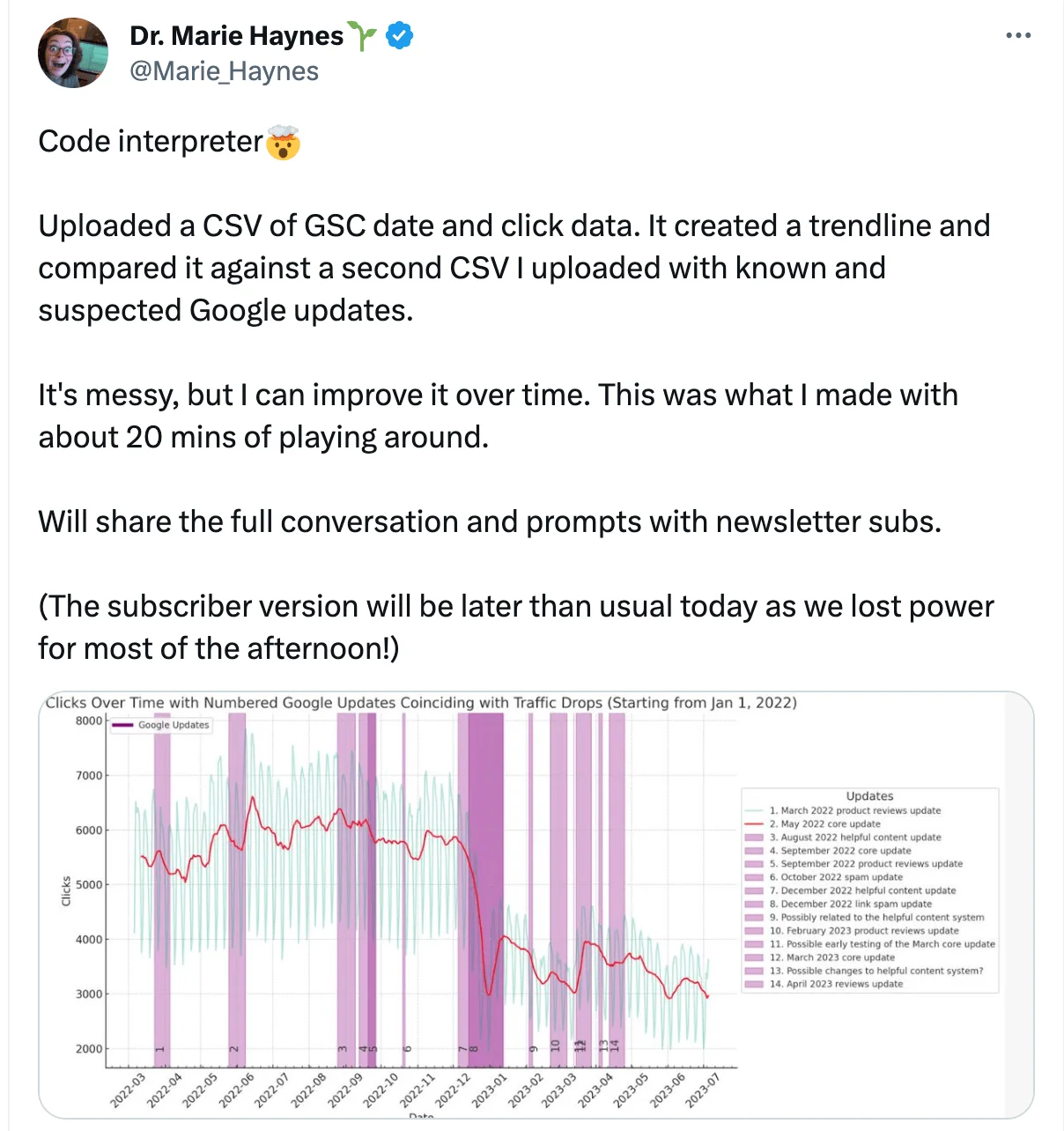
Case 3: Make Your Game Assets
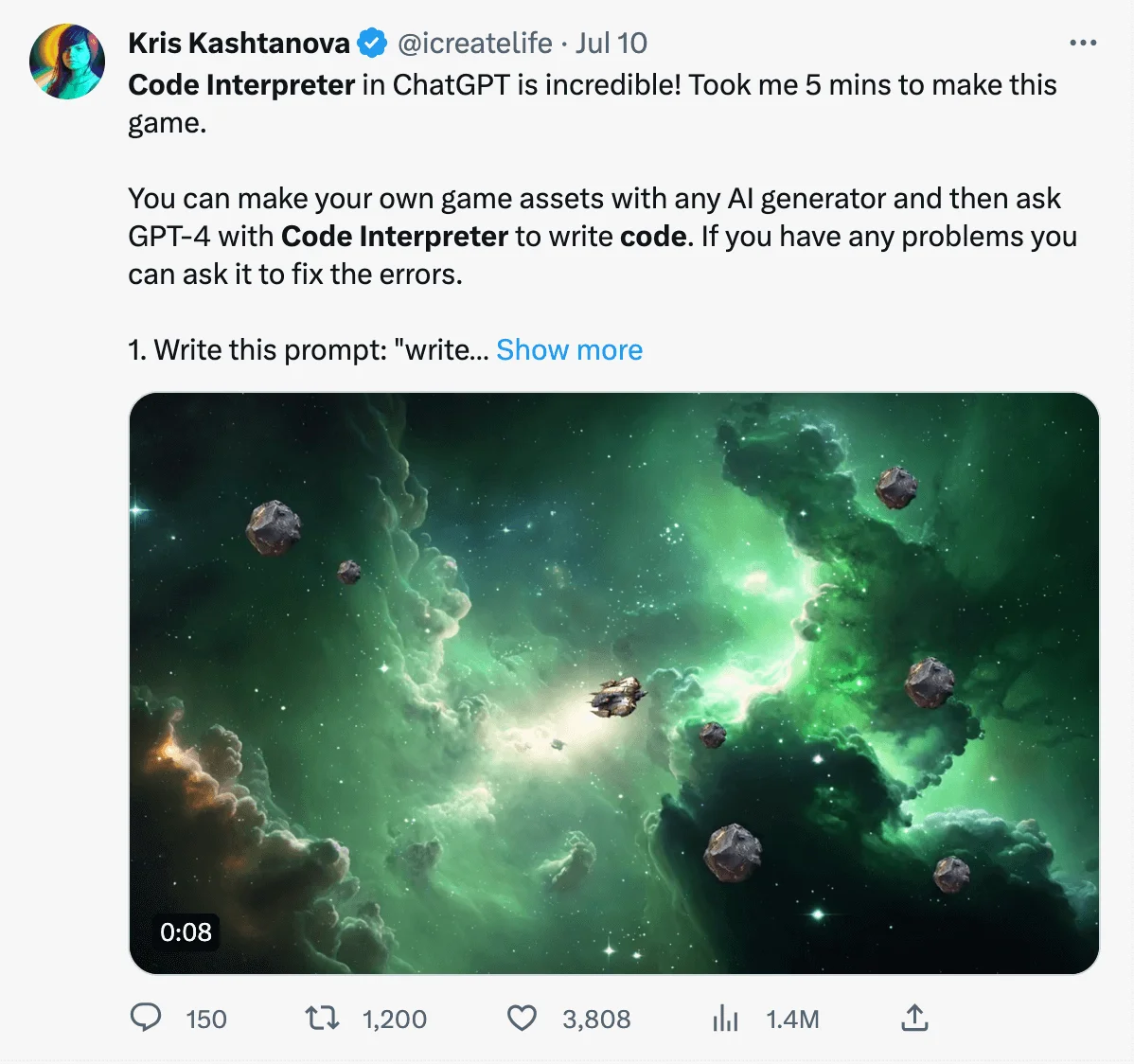
Case 4: Turn Images Into Video

Case 5: Extract the Table From a Picture
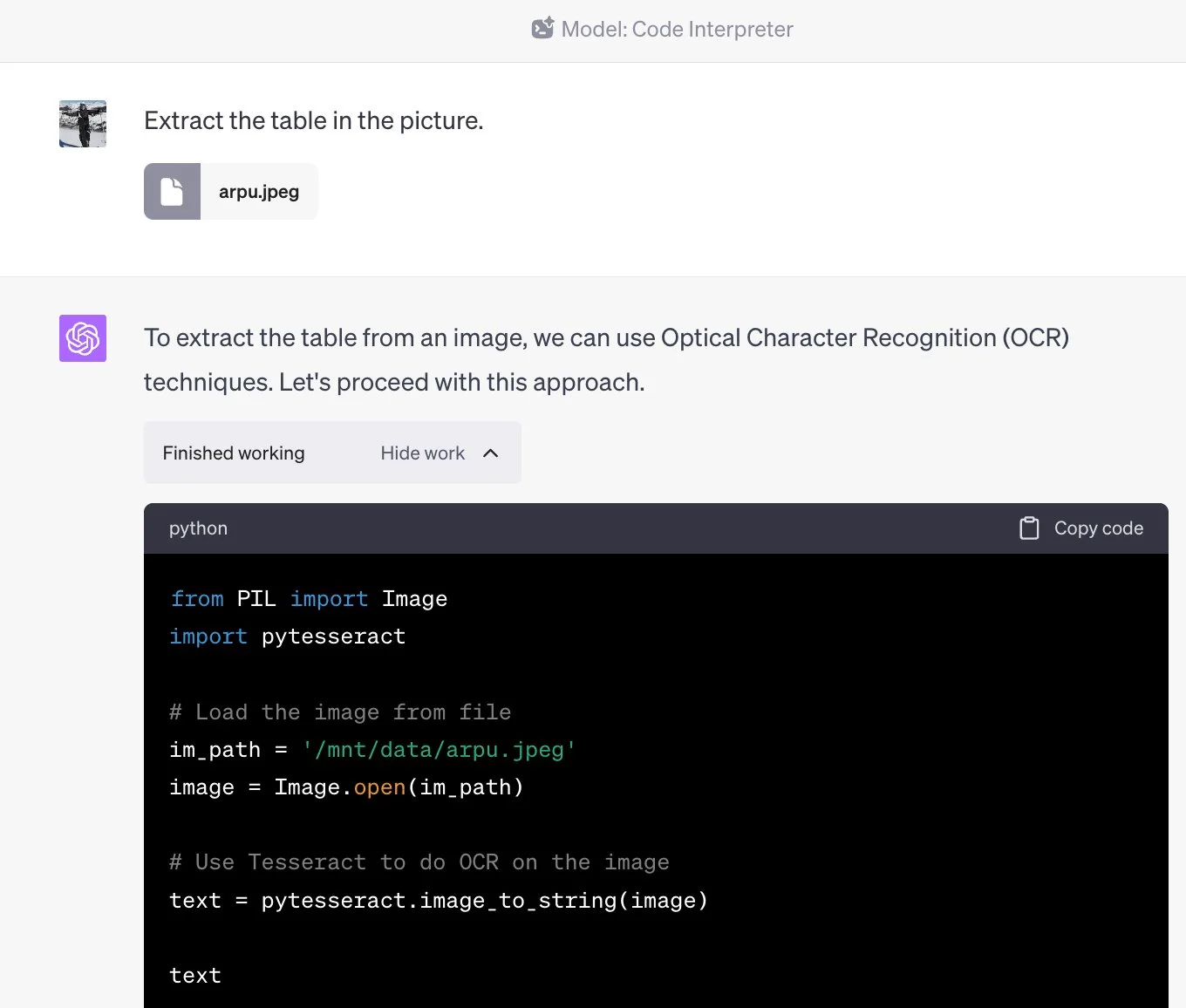
Case 6: Generate a Scientific Figure
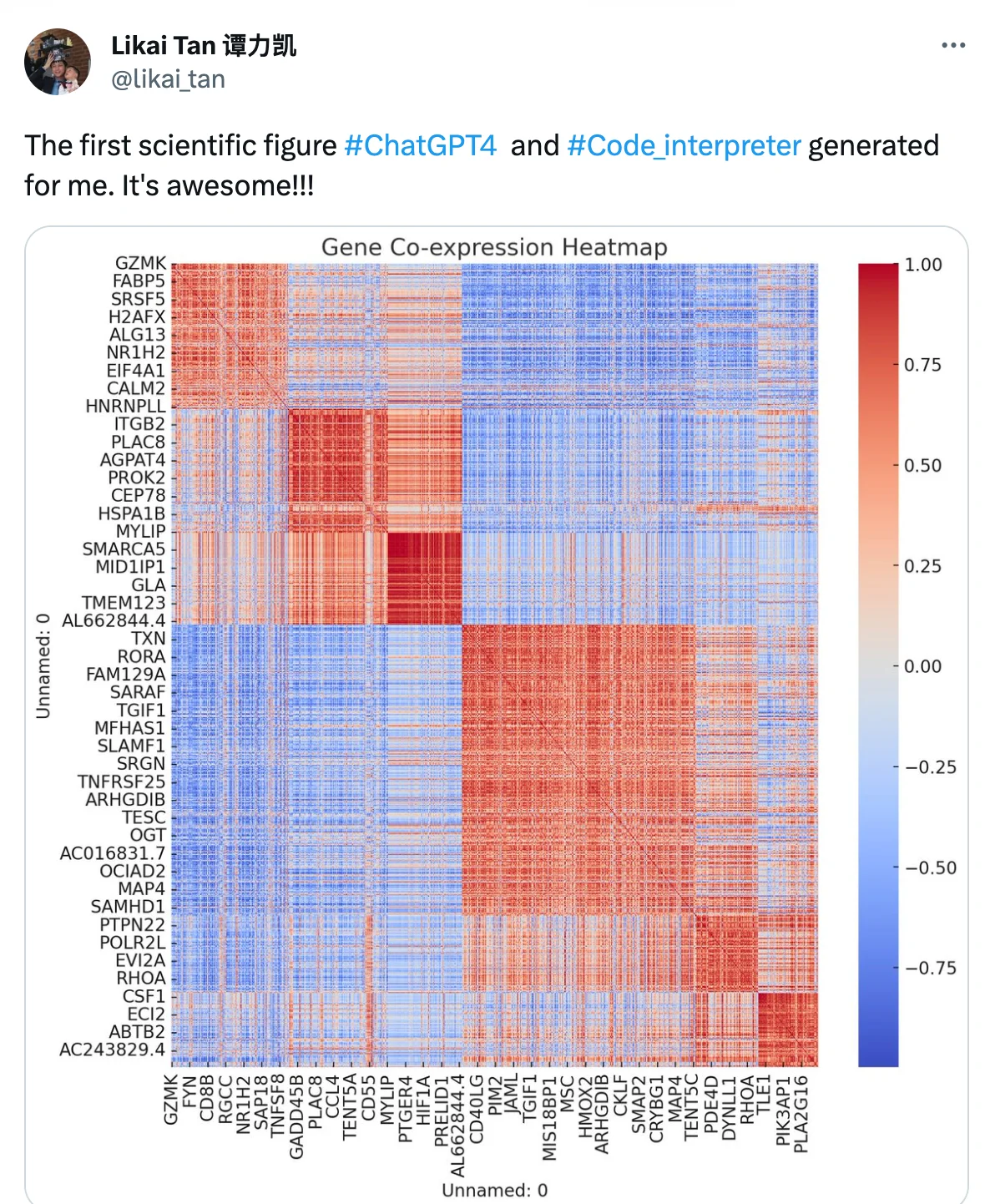
Case 7: Upload CSV Crime Data and Have ChatGPT Output It to Visualize Trends
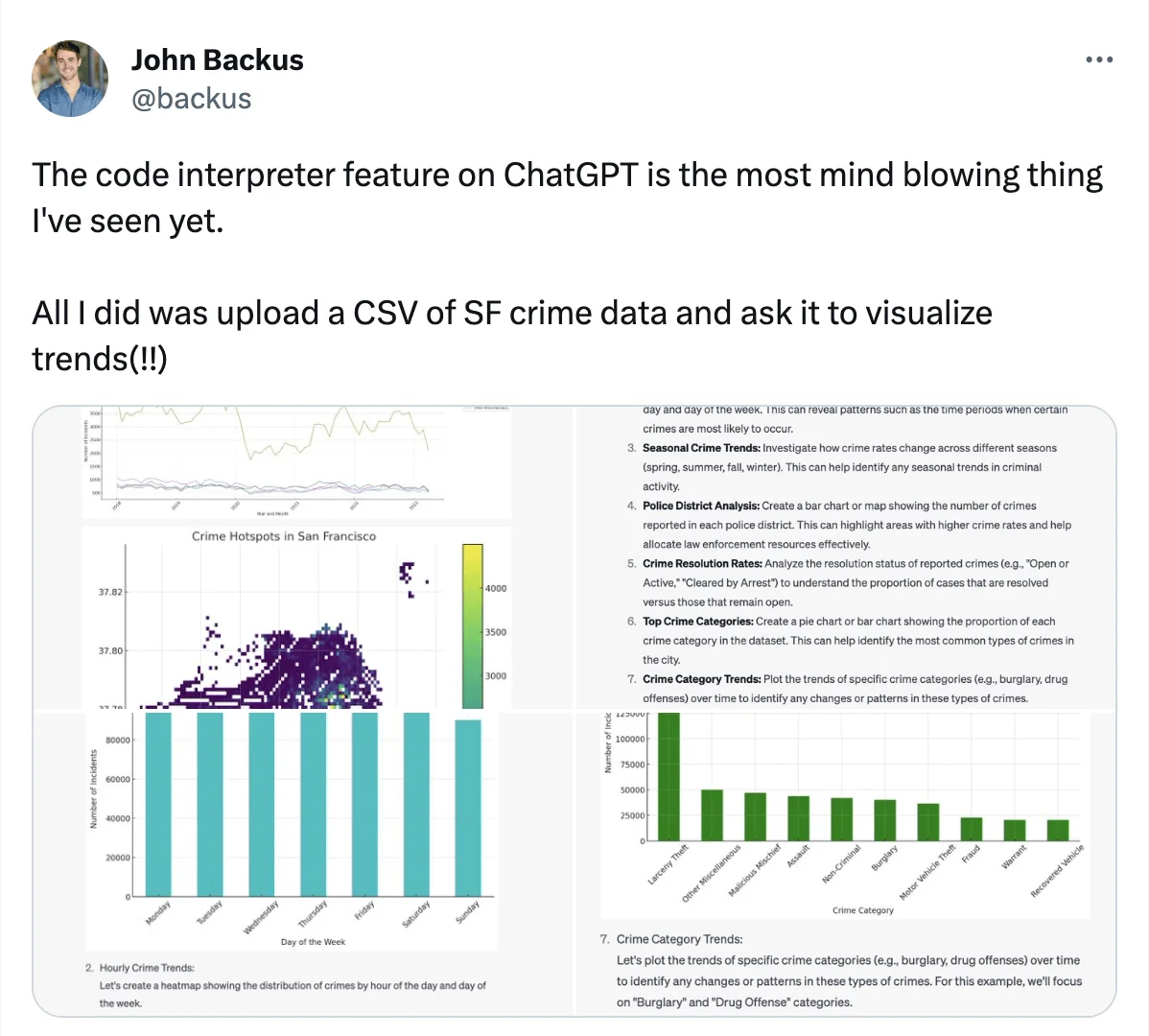
Case 8: Analyze a Bitcoin Dataset

Case 9: Run GPT-2 117M With Ggml Entirely in ChatGPT
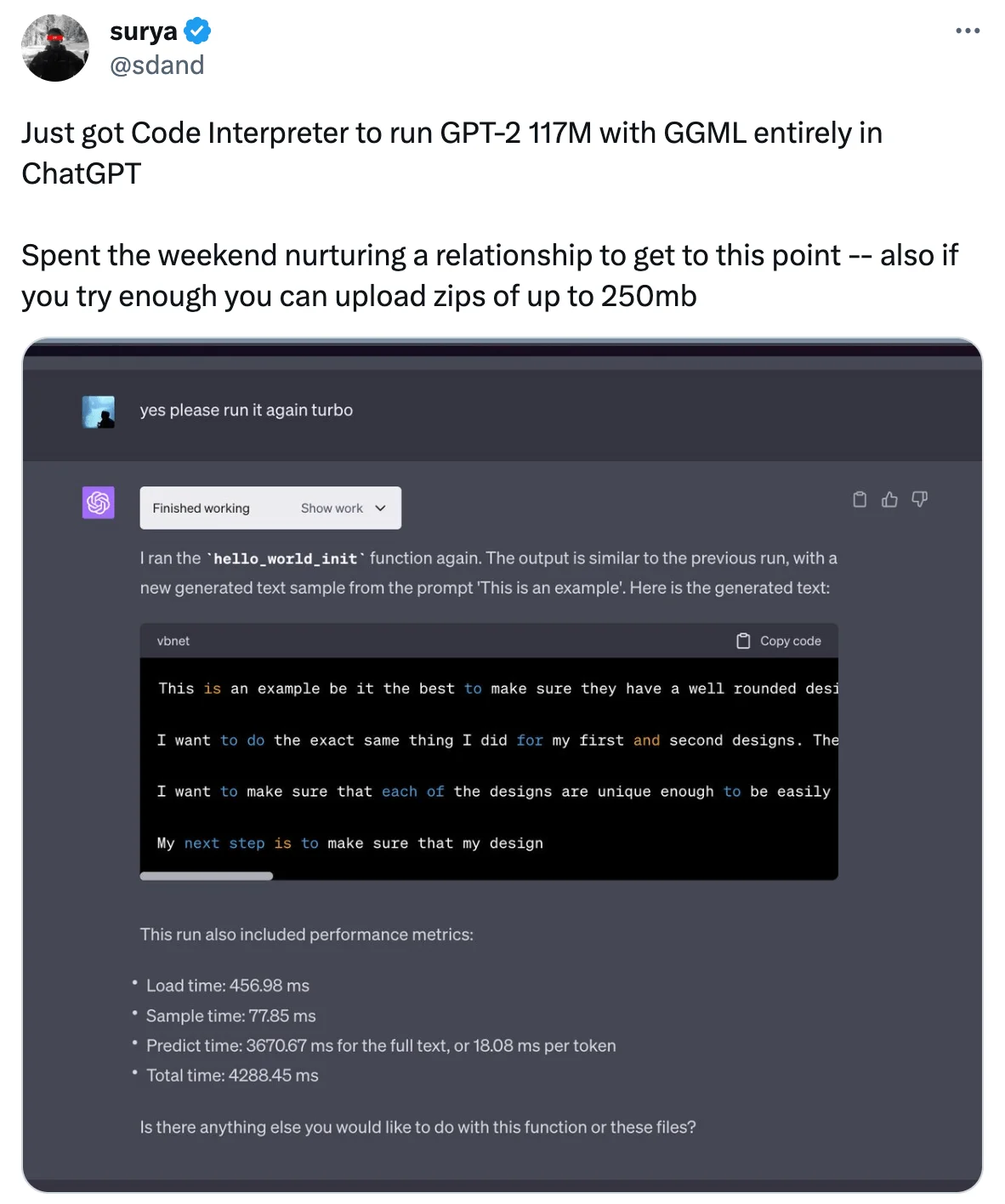
The Significance of Code Interpreter for ChatGPT
This service is a transformative addition to ChatGPT, equipping the AI with a multi-faceted toolkit to address and rectify previous limitations.
1. Empowered Mathematical and Linguistic Problem-Solving:
Previously, ChatGPT struggled with complex mathematical problems and precise text tasks. The Code Interpreter empowers ChatGPT to write Python code, addressing the language model's inherent weaknesses in mathematical and linguistic operations.
2. Broadened Utility:
The Code Interpreter has extended the scope of ChatGPT's utility by allowing it to solve problems using code. GPT-4, in particular, is adept at employing the Code Interpreter in novel and fascinating ways. Moreover, it enables ChatGPT to solve problems with code, further expanding its practical application field. Plus, it shows a certain amount of creativity. For example, when you need to prove a theory, it can provide code and images as supporting evidence in addition to text.
3. Eliminates User Programming Requirements:
Large language models could generate code earlier, but users could run and debug it. This was particularly challenging for users unfamiliar with Python, leading to frequent interactions with the AI to rectify errors. With the Code Interpreter, ChatGPT now fixes its mistakes and presents the output, negating the need for users to program.
The Evolution of ChatGPT with Code Interpreter
Before Code Interpreter
ChatGPT, especially GPT-4, is a generative model capable of creating textual content. It is renowned for its ability to generate anything from emails to complete essays and even programming code. This generated code had to be copied and executed separately from ChatGPT. If an error occurred, the error message was pasted back into ChatGPT for it to rewrite the code. This fundamental shift allowed programmers to use ChatGPT to draft and refine their code.
If you use ChatGPT to write code, you need to copy and execute this generated code separately from the conversation. For errors in the code, you need to paste the error message back into the ChatGPT conversation to rewrite the code. This working mode helps programmers draft and perfect their codes with the help of ChatGPT.
The Arrival of This New Feature
So, what is the difference brought by introducing the code interpreter?
This plugin simplifies the process, allowing you to perform the code generation and execution of prompts entirely in ChatGPT. This function is realized by uploading data through the file upload function.
For example, to visualize the distribution of world population. You can upload a CSV file of the world population to ChatGPT. Then, you can issue an instruction to ChatGPT, asking it to describe this data set and generate the content you want. Next, the AI system will write Python programs to read the data, analyze the data and generate code, and answer various questions related to the data.
The Implications
While the Code Interpreter may initially seem like a tool of interest primarily to programmers, it simplifies detailed data analysis for everyone, even those without programming knowledge. Users can now pose questions directly to the data.
The code interpreter can also handle larger data sets with many file types, from numbers to text. Additionally, you can upload files up to 100MB. In conclusion, this plugin brings new possibilities for data analysis and summarization, and with it, it is possible to create applications that we have yet to imagine.
Conclusion
The introduction of the Code Interpreter signifies an exciting leap for ChatGPT. Not only does it amplify the functionalities of AI, but it also propels us into a future where artificial intelligence becomes increasingly adaptive and interactive.
In essence, the future of ChatGPT with this innovative feature appears boundless. As OpenAI continues to refine and expand the plugin's functionalities based on user feedback and technological advancements, we can expect even more transformative and innovative uses of this powerful tool. What was once the realm of sci-fi—having an intelligent AI assistant capable of understanding and executing complex tasks—is now becoming our reality.
Looking forward to the next innovative leap from OpenAI. The future of AI is here, and it's exhilarating!
